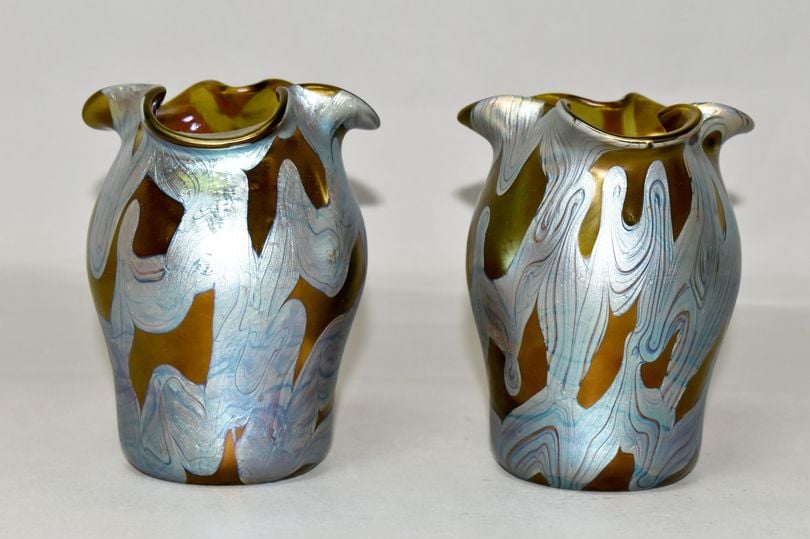Auctions
A British Couple Bought Two Vases for $10 at a Thrift Sale. They Turned Out to Be Art Nouveau Collectibles Worth 150 Times That
The car boot sale finds turned out to be Art Nouveau treasures.

The car boot sale finds turned out to be Art Nouveau treasures.

Sarah Cascone

A British couple got a nearly 1,500 percent return when a pair of iridescent Art Nouveau vases they picked up for £8 ($10) at a car boot sale sold for £1,200 ($1,500) at Richard Winterton Auctioneers in Lichfield, U.K., on May 2.
The vases, it turned out, were antiques from around the year 1900, made by Loetz, an art glass manufacturer active in the Bohemia region of Austria-Hungary from 1836 until 1947.
Christine Rehm, age 65, and her husband, Manfred Rehm, 69, spotted the vases five years ago while living in Spain near Alicante. When the seller agreed to mark down the £10 asking price by 20 percent, the couple bought them to display on their mantlepiece.
When they moved back to the U.K. in 2021 after 15 years abroad, they brought the vases with them—and took them to Richard Winterton for valuation at one of their weekly events at Burton Market Hall in East Staffordshire.

Christine and Manfred Rehm during their years in Spain. Photo courtesy of Richard Winterton Auctioneers, Lichfield, U.K.
“I just liked the style and particularly their color,” Christine Rehm told the Mirror. “We have looked after them and kept them behind glass but I am redoing the lounge and thought I would see if they were worth anything. I could not believe it when I found out what they were. I’m very glad we brought the vases back with us.”
Featuring trefoil-shaped upper rims and a swirling design, the PG29 vases are an example of Loetz’s Phaenomen Genre, the most coveted period for antique glassware collectors as represents the company’s “pinnacle of greatness.”
“The Phaenomen Genre’s main characteristic is the rippled or feathered design on the surface of the object,” Sarah Williams, a senior valuer with Richard Winterton Auctioneers, told the Mirror. “This was achieved by wrapping hot glass threads around a molten glass base and then the threads were pulled on the surface to create the designs whilst all the materials were still malleable. The technique was patented in 1898.”
More Trending Stories:
Considering a Job in the Art World? Here’s How Much Art Professionals Actually Make for a Living